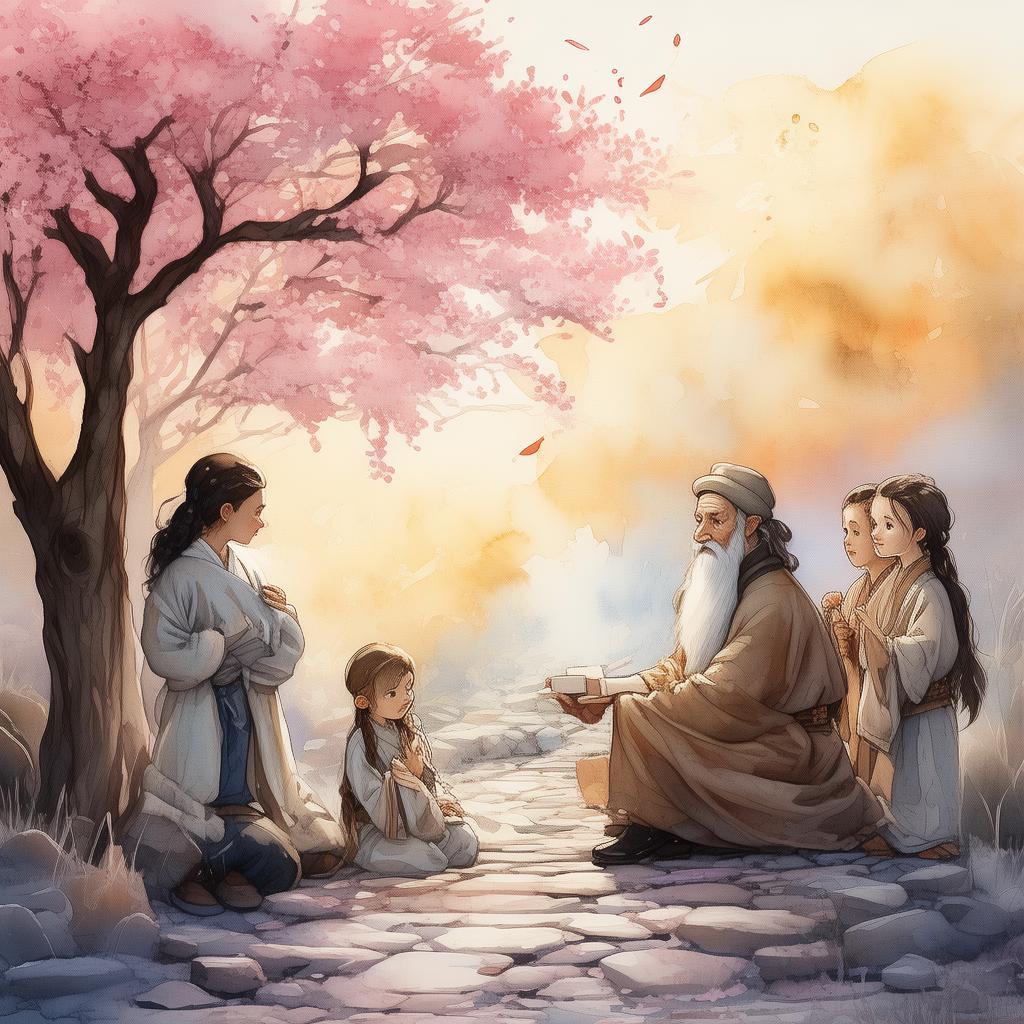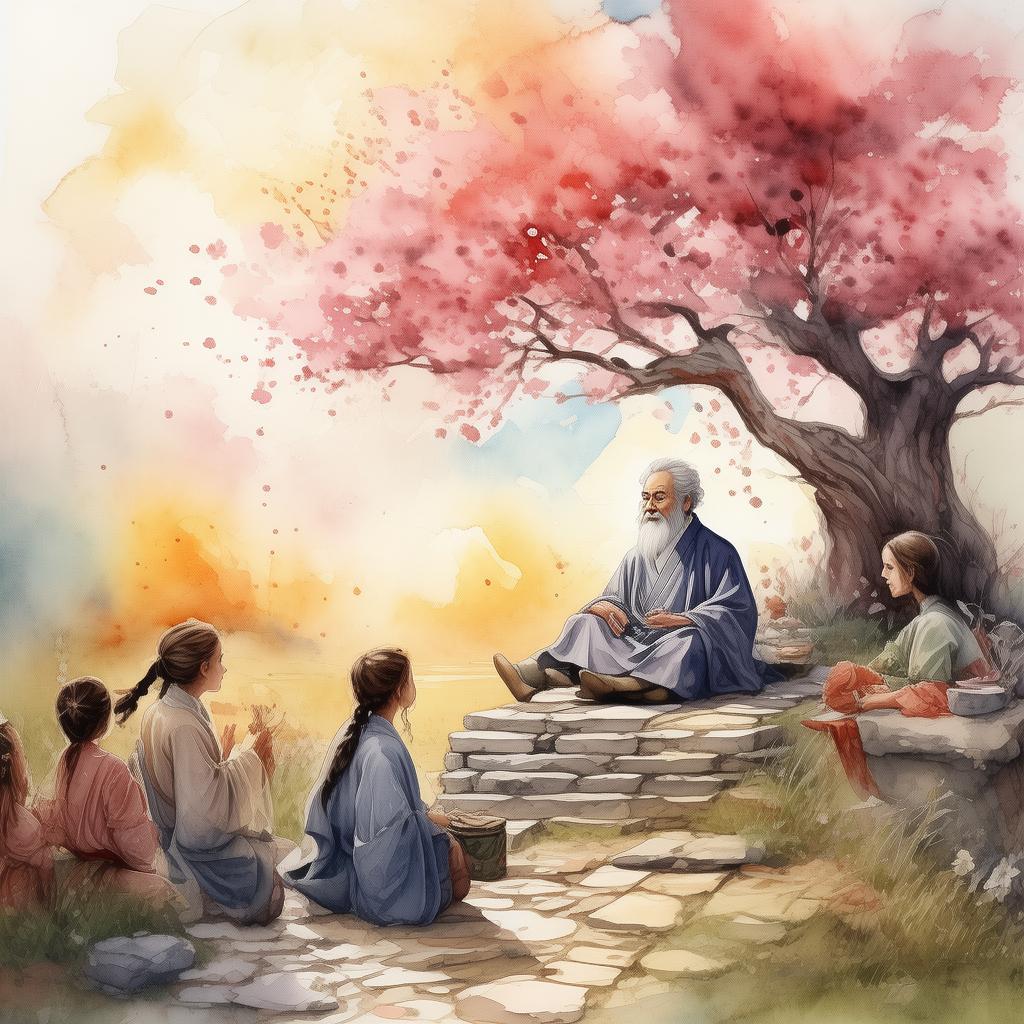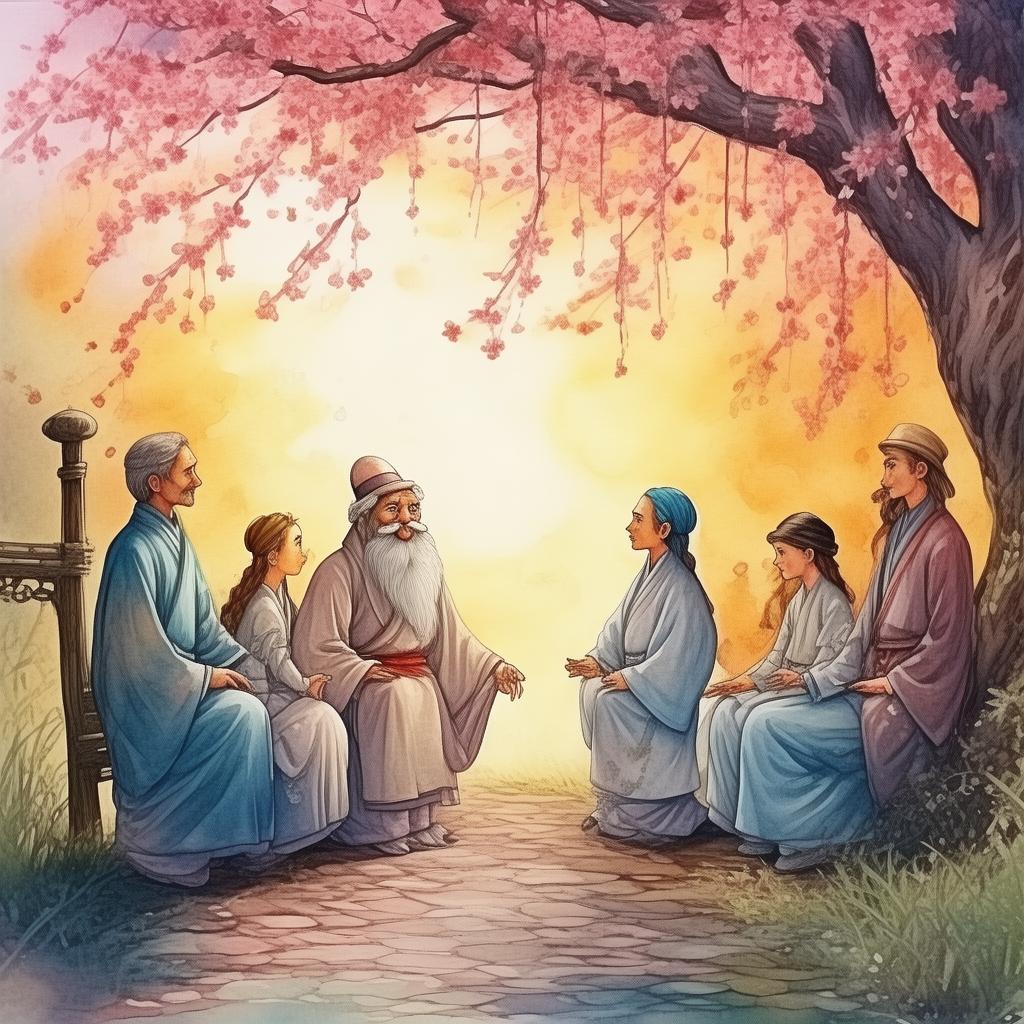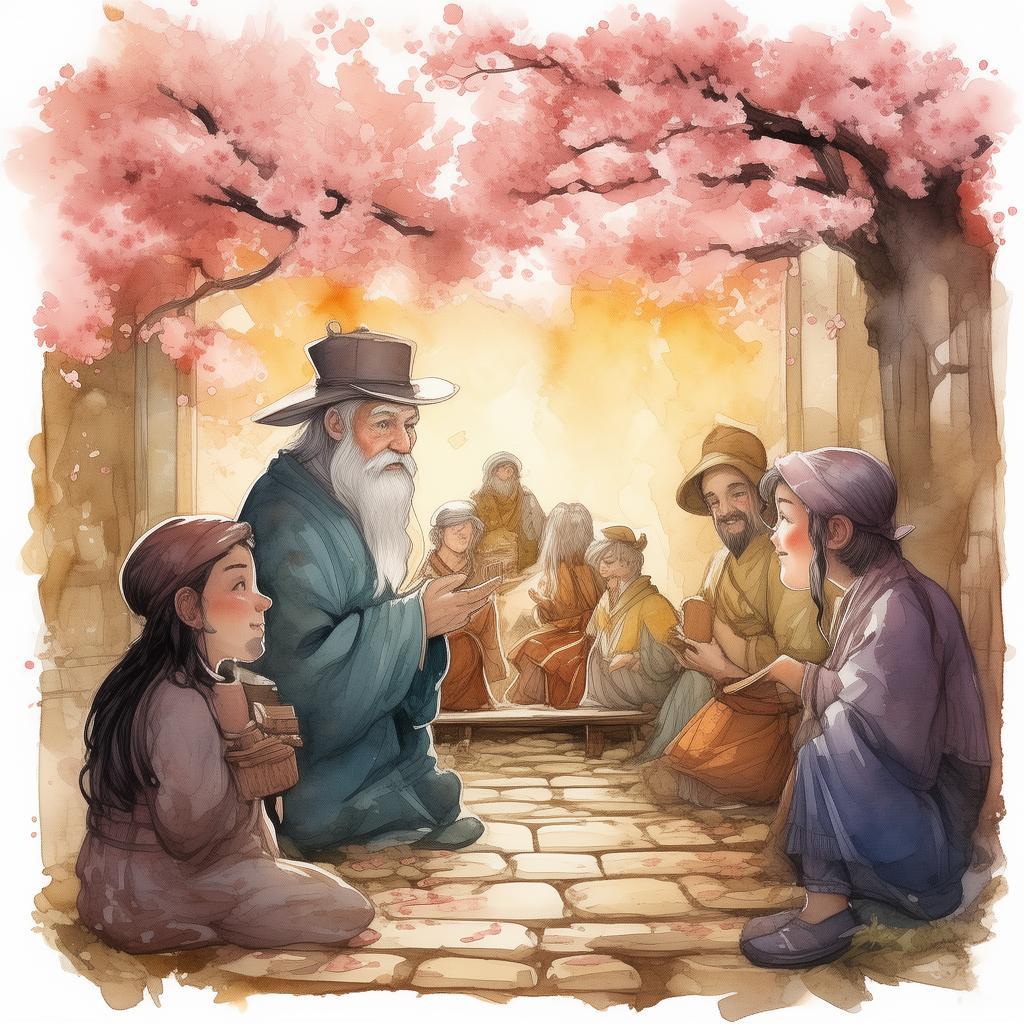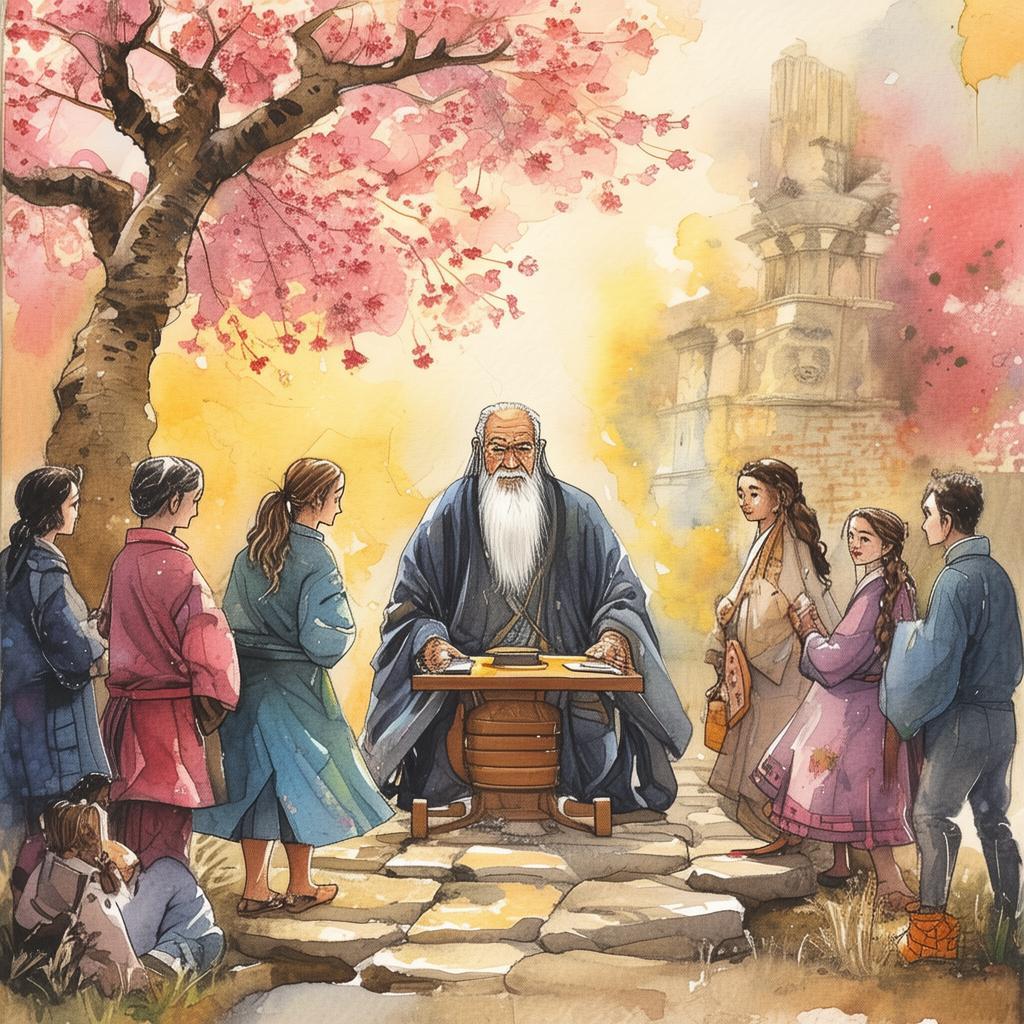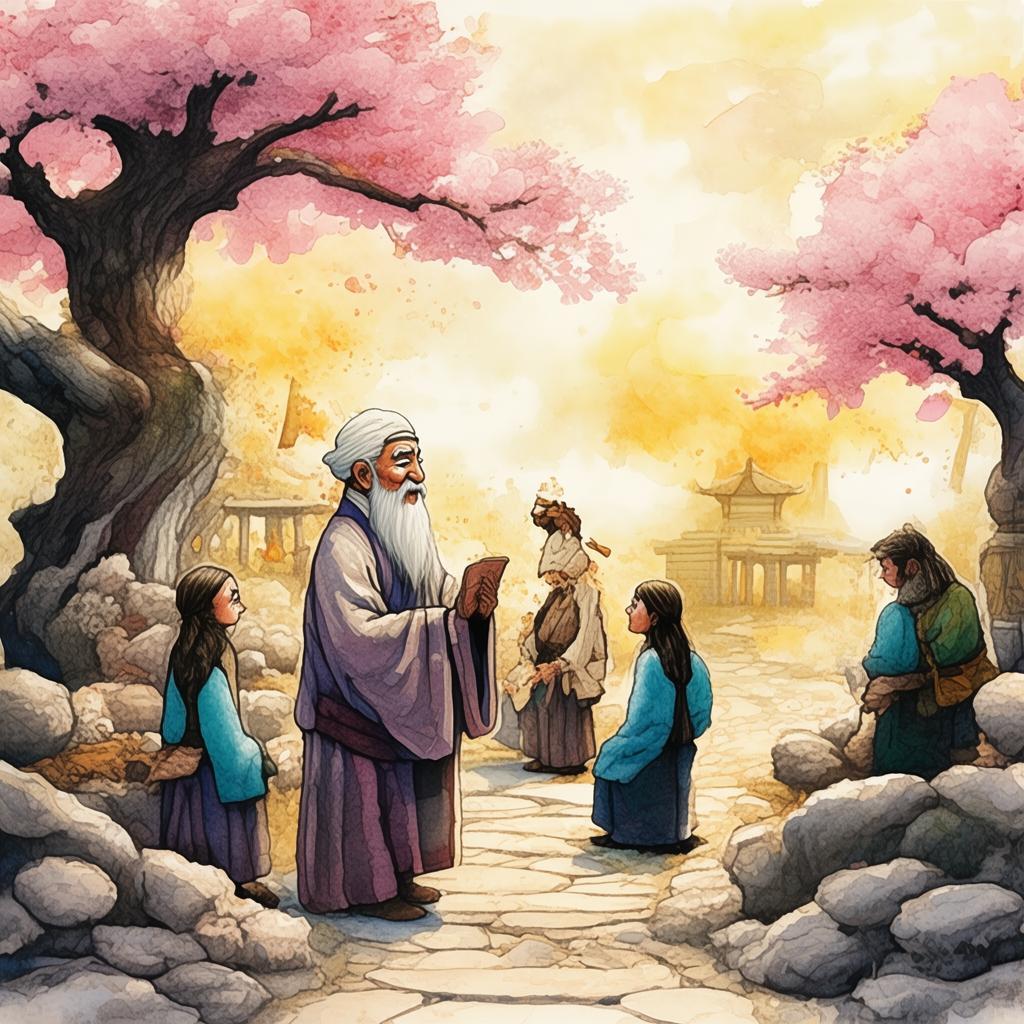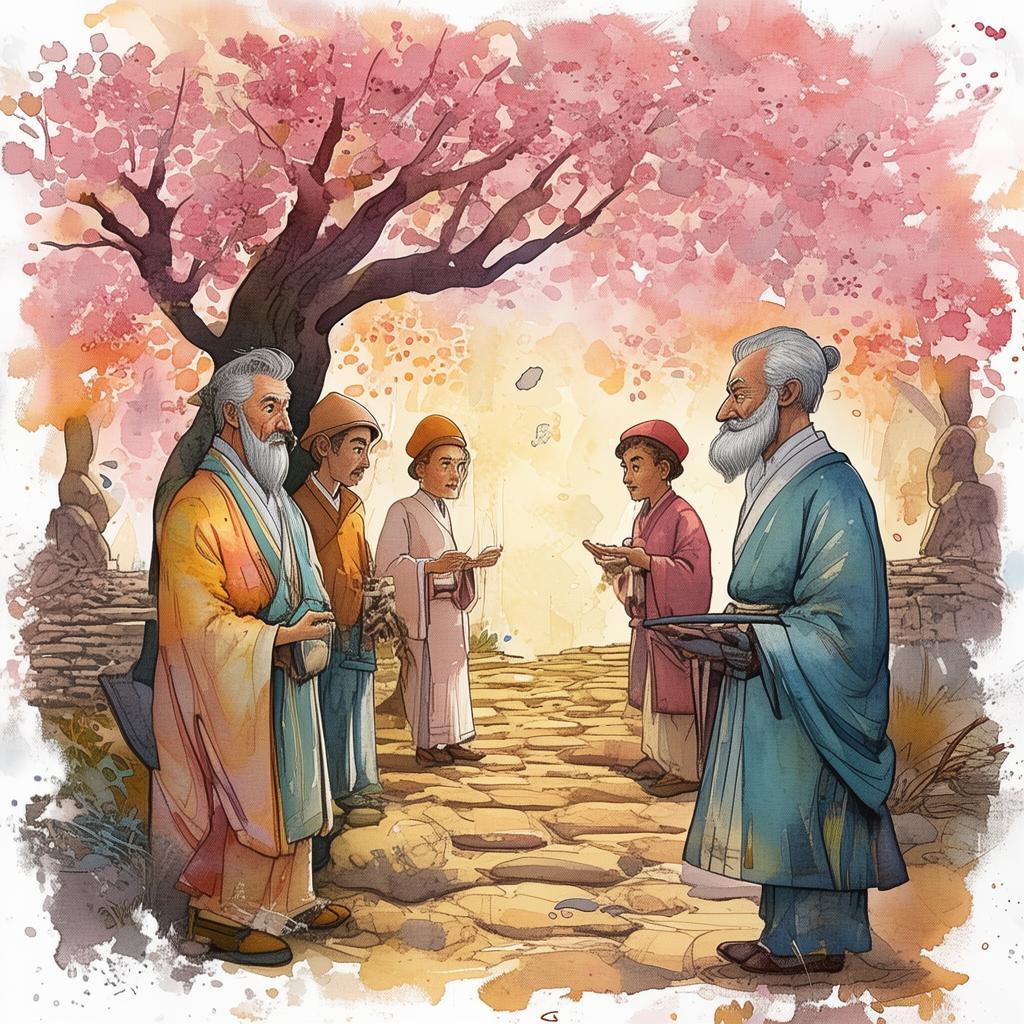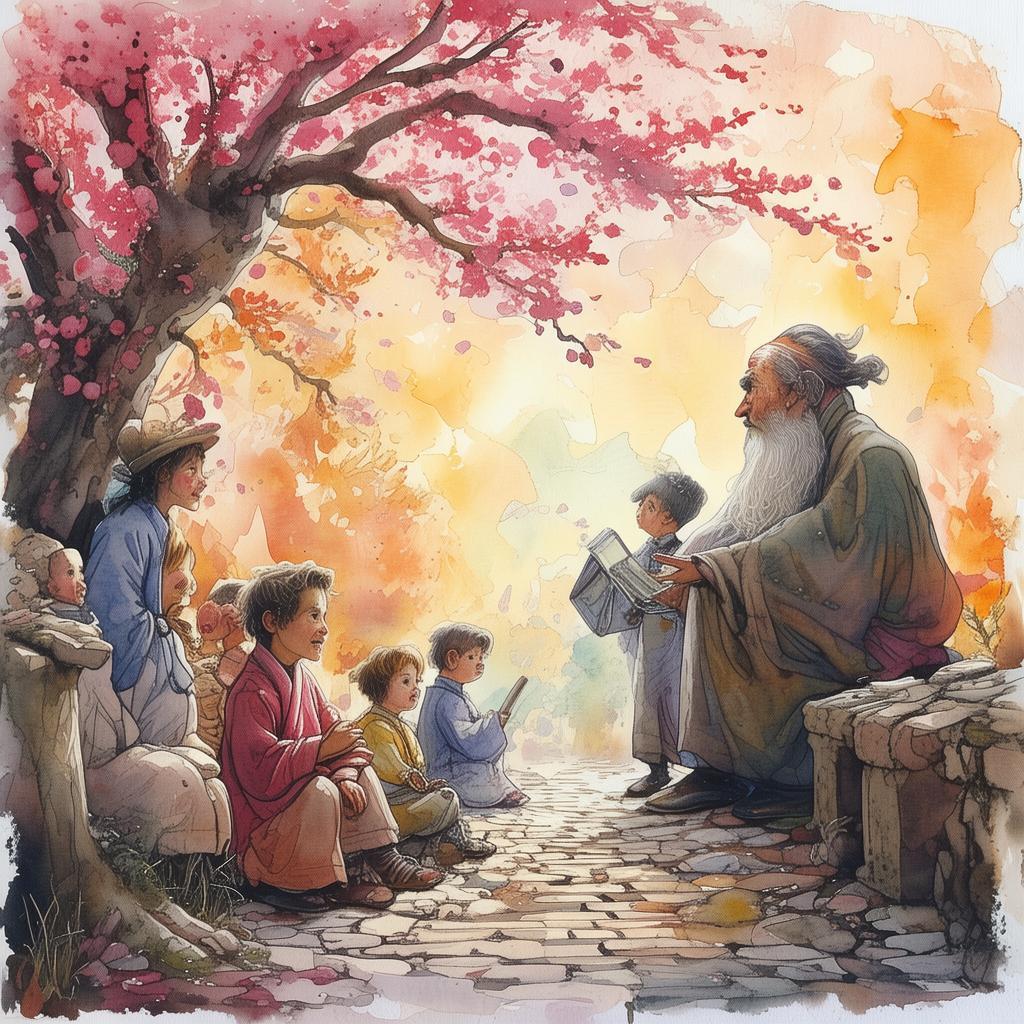The Cursed Canvas: Two Idioms, One Curse Unveiled
In the quaint village of Lushan, nestled between rolling hills and whispering rivers, there stood an old, creaky house. It was said that within its walls, a dark secret lay hidden, a secret bound to a cursed canvas that had been passed down through generations. The villagers whispered about the canvas, which was said to bear two idioms that were cursed with a malevolent force. It was said that anyone who touched the canvas would be doomed to a life of misfortune.
The canvas was the prized possession of the Li family, a family of artists who had once been celebrated for their exceptional talent. However, the curse had slowly drained their fortune and health, leaving them destitute and broken. Among them was a young and ambitious artist named Mei, whose dream was to restore her family's honor and break the curse that plagued them.
Mei had heard tales of the cursed canvas since she was a child, but she was determined to uncover its secrets. She believed that if she could understand the idioms, she might find a way to break the curse. One rainy evening, as the storm raged outside, Mei found the courage to confront the canvas that had been hidden away in her grandmother's attic.
The canvas was an ancient, leather-bound masterpiece, its surface etched with intricate patterns and the words of two idioms: "The pot calls the kettle black" and "A bird in the hand is worth two in the bush." As Mei reached out to touch the canvas, a strange warmth enveloped her, and she felt a surge of energy course through her veins.
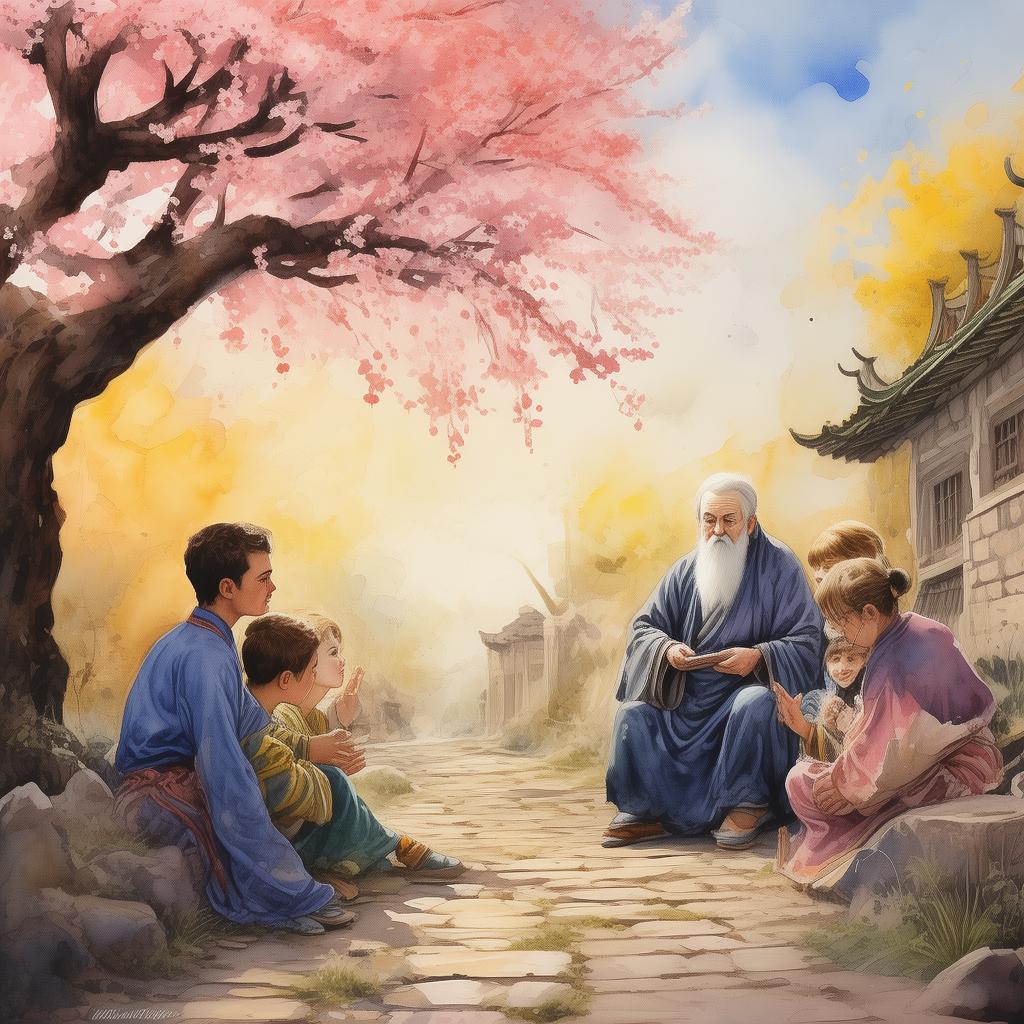
Suddenly, the room seemed to spin, and Mei found herself transported to a strange, ethereal realm. She saw visions of her ancestors, who had been bound to the canvas and forced to live out their lives in eternal torment. Each vision was a reminder of the curse's power and the pain it had caused her family.
In her quest to break the curse, Mei discovered that the idioms were not mere words but ancient incantations that held the key to the curse's origin. She learned that the first idiom, "The pot calls the kettle black," was a reference to a rivalry between two rival families, the Lis and the Wus, who had once been the most powerful in the village. The second idiom, "A bird in the hand is worth two in the bush," spoke of a betrayal that had torn the Li family apart.
Mei realized that the curse was a manifestation of the lingering resentment and sorrow that had never been resolved. To break the curse, she had to confront the past and set her family free from the burden of their history. She embarked on a journey that took her through the shadows of her ancestors' lives, uncovering secrets and lies that she never knew existed.
As Mei delved deeper into the past, she encountered unexpected allies and formidable foes. She had to navigate a labyrinth of deceit, betrayal, and revenge, all while trying to unravel the true meaning of the idioms. With each revelation, she grew stronger and more determined to break the curse.
The climax of Mei's journey came when she discovered that the betrayal that had caused the curse was not what she had believed. It was a tragic misunderstanding that had been twisted and exploited by those who sought to maintain their power. With this knowledge, Mei was able to confront the source of the curse and release her ancestors from their eternal prison.
In a final, heart-wrenching moment, Mei reached out to touch the canvas once more. The curse began to lift, and the room around her began to fade away. As the canvas shimmered with light, Mei felt a sense of peace wash over her. The curse was broken, and her family's honor was restored.
When Mei returned to the real world, she found that the village had changed. The once-derelict Li house was now a beacon of hope, a place where people could come to seek understanding and healing. Mei had not only broken the curse but had also brought her family and the village together, proving that even the darkest of secrets could be overcome with courage and love.
The Cursed Canvas: Two Idioms, One Curse Unveiled is a tale of redemption, forgiveness, and the power of truth. It is a story that captures the essence of the human spirit, reminding us that even the most cursed of destinies can be overcome with determination and a willingness to confront the past.
✨ Original Statement ✨
All articles published on this website (including but not limited to text, images, videos, and other content) are original or authorized for reposting and are protected by relevant laws. Without the explicit written permission of this website, no individual or organization may copy, modify, repost, or use the content for commercial purposes.
If you need to quote or cooperate, please contact this site for authorization. We reserve the right to pursue legal responsibility for any unauthorized use.
Hereby declared.


